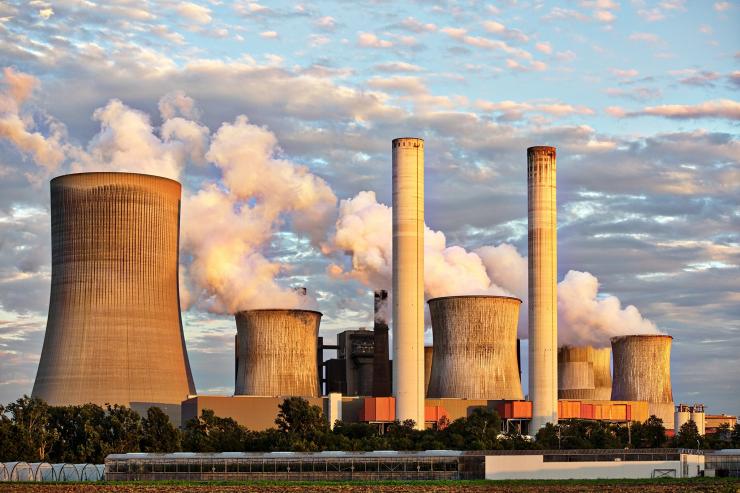Introduction to Energy Transition
Throughout history, our society has seen periodic shifts in how we acquire energy. In some cases, it was done by introducing new technologies such as steam power engines or widely available electricity. In other cases, ironically, it was applying old approaches in more advanced ways such as solar energy heating or windmills. Note that prior to the heyday of the use of electricity, energy necessary to do work was obtained from sources we now consider renewables. These include wind, solar, and hydropower. Even fossil fuels date to the early days of organized society. Cultures used seeping crude oil, peat bogs, and coal to burn for light, heat, and cooking. Windmills dotted the Dutch landscape, and water wheels were common in early America. In the pre-electricity era, wind and hydropower were used more for mechanical purposes such as pumping water or spinning mills. Solar was used mainly for heating and cooking.

Credit: power-plant-industry-chimney by Benita5 from Pixabay is licensed under the Simplified Pixabay License
Electricity generation found a new application for fossil fuels, hydropower, and wind. The ability to generate electricity using some form of energy to spin turbines which generated current transformed the energy landscape. Burning fossil fuels generated steam to turn turbines. Even with the advent of renewable sources, including nuclear, the primary purposes are for generating electricity. Hydropower and wind energy now spin turbines, and solar can either heat water into steam or generate electricity directly via photovoltaics.
We learned from the outlooks that there is information available predicting how this transition will play out. One may think that, with all of the thinking that goes into an outlook, they would be rather accurate and reliable. That is relatively true until there is a “Black Swan Event.” In general, this is an expression for an event that occurs rarely and randomly but has severe consequences. Some definitions go on to say it is also something that, in retrospect, should have been foreseen. The Covid-19 pandemic is such an eventand perhaps even the war in Ukraine.
The 2022 edition of the IEA World Energy Outlook has this highlight statement: "The world is in the midst of its first global energy crisis – a shock of unprecedented breadth and complexity. Pressures in markets predated Russia’s invasion of Ukraine, but Russia’s actions have turned a rapid economic recovery from the pandemic – which strained all manner of global supply chains, including energy – into full-blown energy turmoil." Coupled with the lingering effects of the pandemic, the long-term impacts to the prospects for rapid clean energy transitions remains unclear. It is too soon to say whether today’s crisis represents a major setback for efforts to bring about a more secure and sustainable energy system, or a catalyst that accelerates the pace of change. The war in Ukraine and the pandemic continue to unfold; many uncertainties remain, and crucial energy policy decisions have yet to be made.
